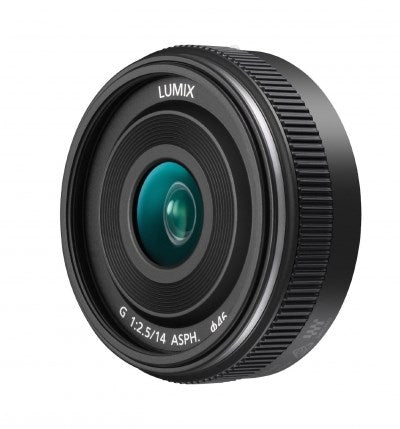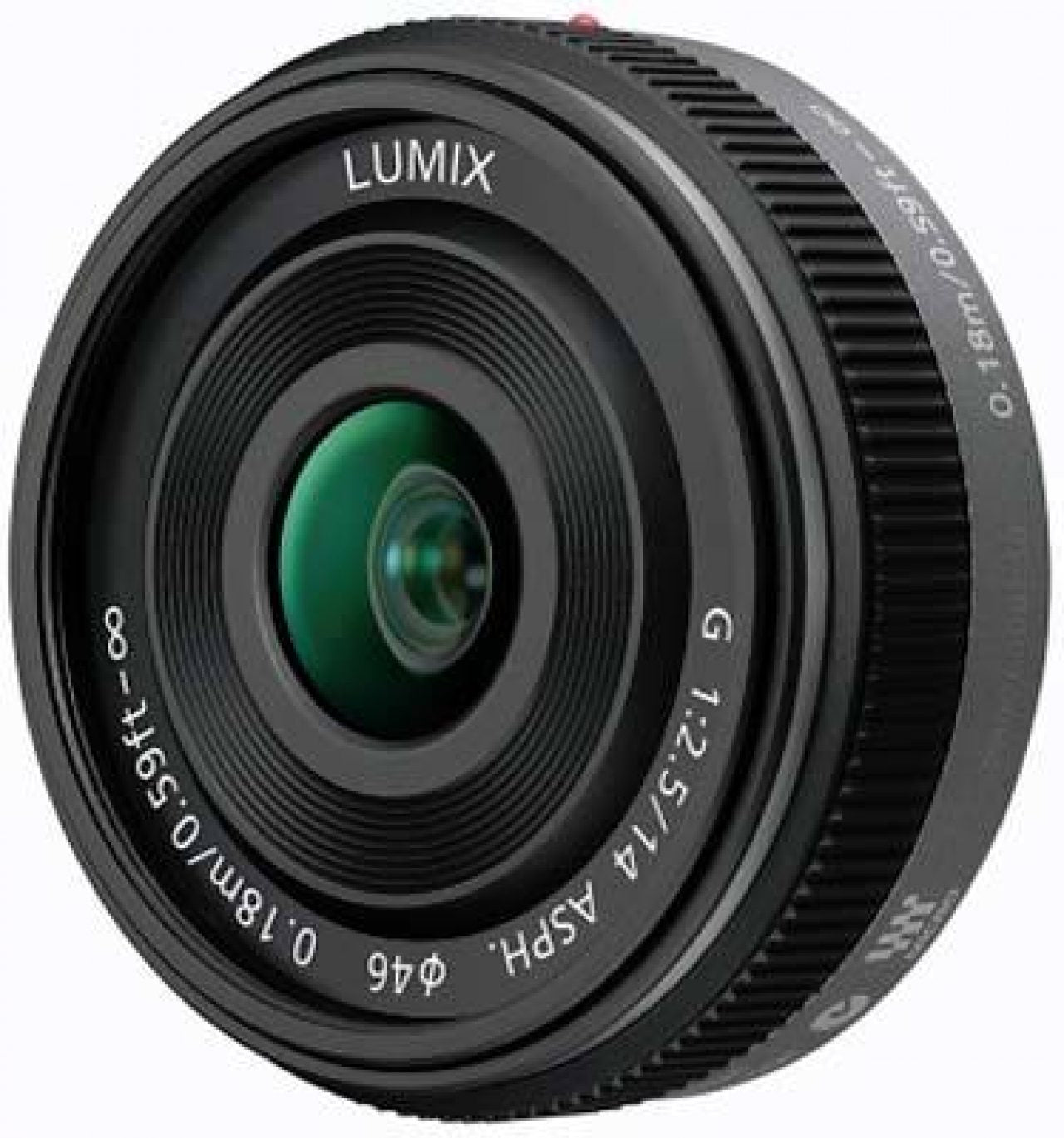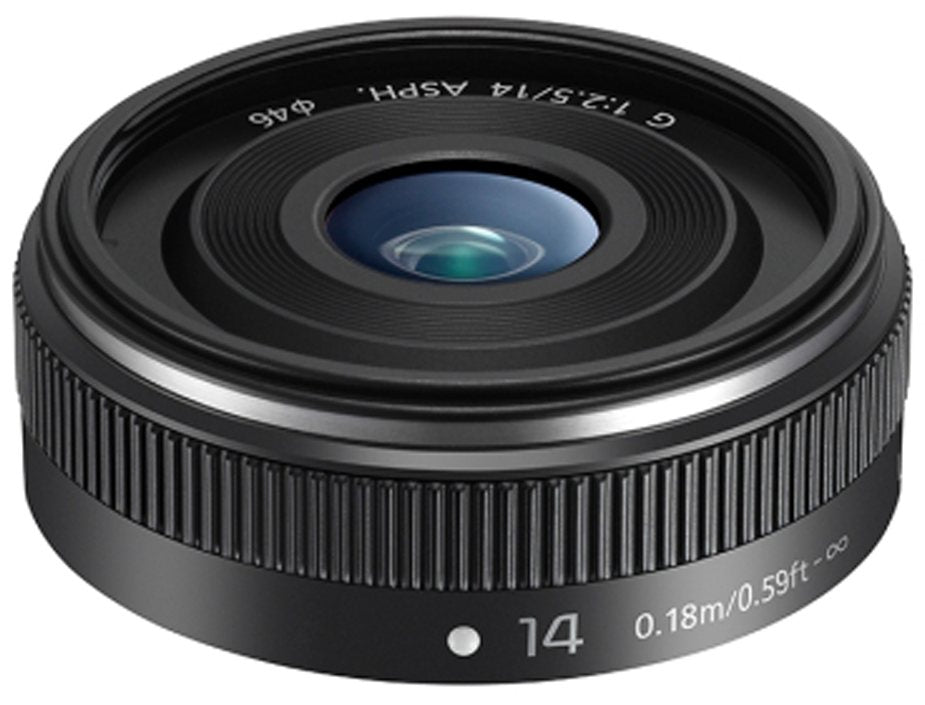Product Description
Panasonic 14mm f2.5 LUMIX G Lens Black - Micro Four Thirds Fit
- Compact and Lightweight Pancake Lens
- 14mm (35mm camera equivalent: 28mm) Wide-angle view and bright F2.5 aperture
- Three Aspherical Lenses for Superb Optical Performance
- Contrast AF System Support
- Based on the Micro Four Thirds System Standard
- Circular Aperture Diaphragm and Multi-coated Lens Elements
Made with quality in mind the Panasonic 14mm f2.5 Lumix G lens delivers outstanding results in a well made casing. Ideal for the photographer looking to achieve beautiful results the lens offers quality in a smaller sized lens. The fast f/2.5 aperture ensures you can always record the moment as you see it without compromising quality.
The LUMIX G 14mm f2.5 II ASPH is a remarkable lens that boasts six lenses in five groups, including three aspherical lenses. This unique combination allows for both compactness and high performance, making it ideal for capturing stunning landscapes, snapshots, and indoor shots.
One of the standout features of this lens is the inclusion of a stepping motor, which ensures smooth and silent focusing. This makes it perfect for use in both video recording and photography.
When mounted on a digital single lens mirrorless LUMIX G camera, you can take full advantage of the high-speed, high-precision contrast AF system. This allows you to capture even the most fleeting moments with ease and precision.
Overall, the LUMIX G 14mm f2.5 II ASPH is a must-have for any photographer or videographer looking to take their craft to the next level. With its exceptional performance and compact design, it's the perfect addition to any camera kit.
For full specifications click Here





















